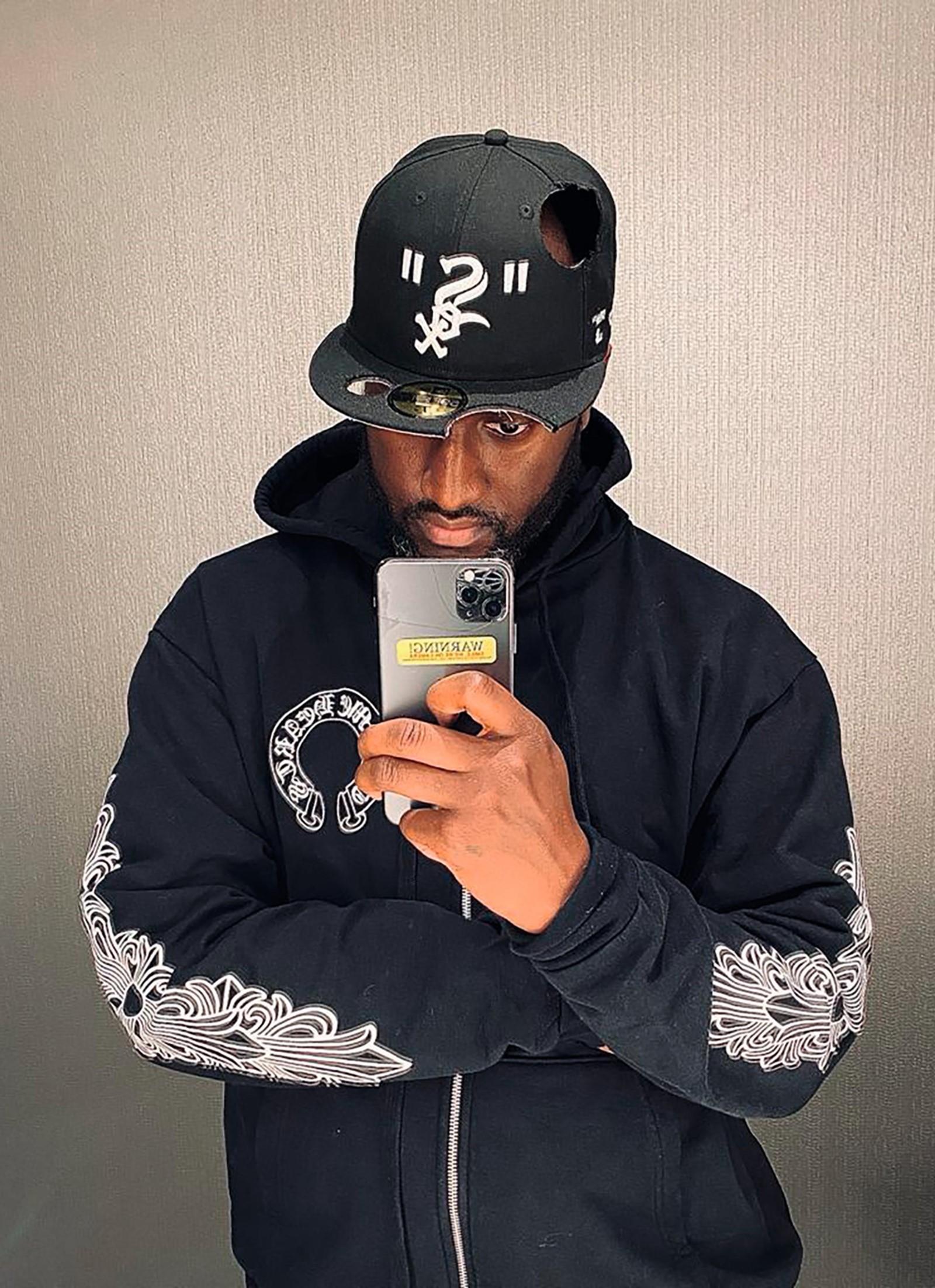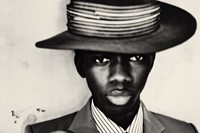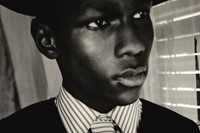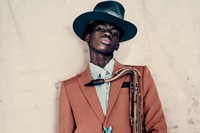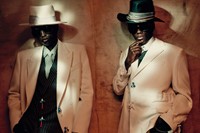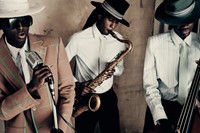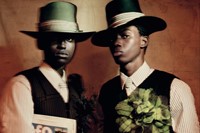This article is taken from the upcoming Spring/Summer 2022 issue of AnOther Magazine, which comes out next month:
It’s a strange truth that it is only when someone has left the cultural landscape that we truly appreciate how great a force they really were. In the void they leave behind, their presence and the shape and scale of the creative ground they covered become clear. Virgil Abloh had a monumental impact on culture, yet it was almost as if his relentless work ethic, the level of his invention and his expanding artistic practice were expected. Virgil would be in London for only one day to visit Alaska Alaska c/o Virgil Abloh, his architecture and design studio, on his way to the Louis Vuitton offices in Paris to oversee the new collection. He would take the opportunity to DJ in Brixton that very same night and maybe that afternoon also pay a visit to his friend Samuel Ross from A-Cold-Wall. His energy was awe-inspiring. It is as hard to believe that he is no longer here as it is to conceive how much he packed into every day of his short life. His passing is a colossal loss to culture. We can only dare to imagine how much further, at his pace and with his gifts, he would have taken us.
It was during the launch of his “Figures of Speech” exhibition at the Fire Station in Doha, in early November, that I last saw Virgil. Radiating positivity, posing for photographs, embracing friends and talking to everyone at the opening night, he looked in his prime. The last I saw he was being hoisted by a short crane to graffiti the show’s exterior billboard. It was unthinkable that, for the previous two years, he had been privately battling a rare and aggressive form of cancer. There was a moment when he stepped out of the limelight for a few months, when he stopped travelling and giving interviews, but in this instance in Qatar that seemed to be a distant memory, which made the sad news of his passing a few weeks later seem even more bizarre and shocking.
In more than 20 years of attending fashion shows there are only a handful of genuinely revolutionary moments that stand out for me. Virgil’s debut show for Louis Vuitton, for Spring/Summer 2019, titled We Are the World, was one such. It was magical: the rainbow-painted catwalk in the Palais-Royal’s gardens spoke of inclusivity – all genders, all races, all classes welcome. Approximately 700 students wore specially designed T-shirts in a spectrum of colours. It was a new attitude in fashion that brought in a more relaxed, casual, softer form of tailoring for men, a new hip luxury for Vuitton and a new way of expressing power. In one of the final looks there was a tribute to The Wizard of Oz – an amazing knitted sweater with a panoramic image of the yellow brick road, a storybook metaphor for his ascent. When Kanye West and Virgil embraced after the finale it was not only a show of a new Black masculinity, but also the moment when hip-hop and Black culture, which had always deified French luxury, was represented from that opposite perspective: the young African-American male experience of Virgil Abloh. It was the shifting of ancient power dynamics, a reframing of aesthetics and values. As Jon Caramanica wrote in his brilliant obituary in the New York Times:
“There had never been a designer of the hip-hop generation [...] at the head of a French luxury house until Mr Abloh took over Louis Vuitton in 2018. He became an ambassador, and an infiltrator.”
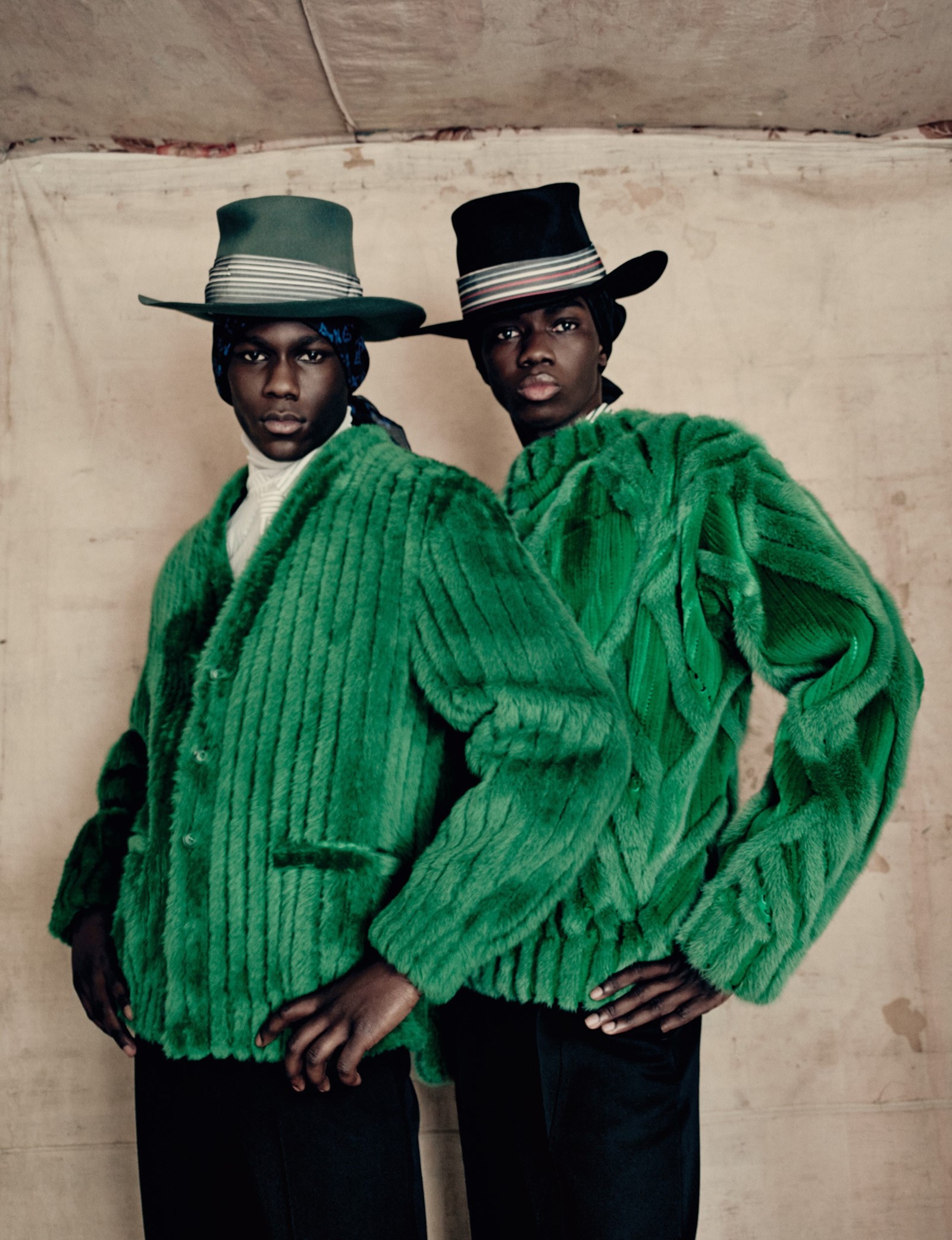
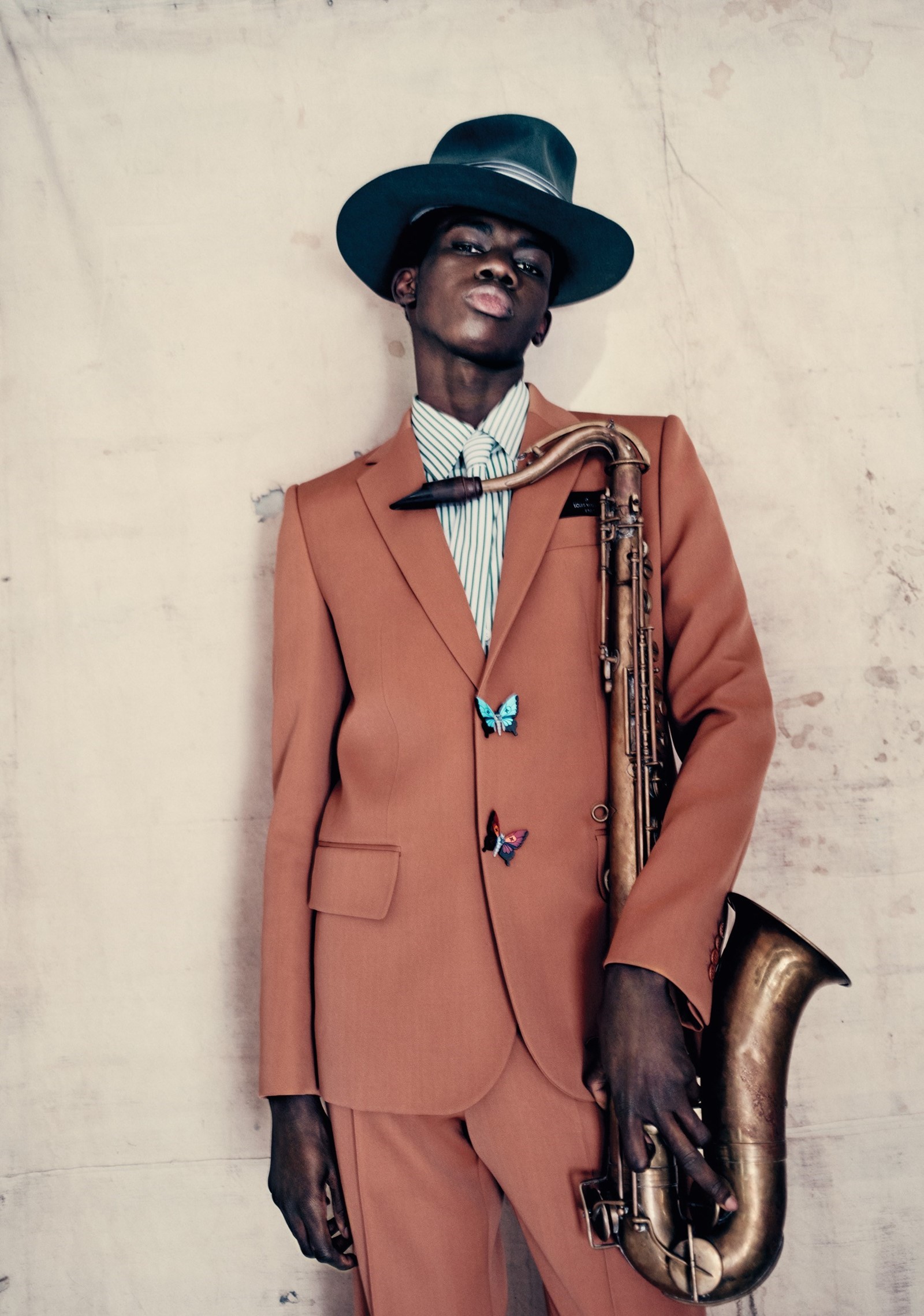
Virgil has always defied categorisation. Taking a posthumous dive into his Instagram account is chilling, but also telling. Within a few swipes you see the range of his kaleidoscopic cultural touchpoints, his genre-busting energy. There’s a post for the Off-White Denim campaign, an animated teaser for last December’s Louis Vuitton men’s show in Miami, a glimpse into the research and design side of his aforementioned architecture practice, a new Off-White x Nike Air Jordan low-top drop, Blind Faith (a film for Off-White directed by newcomer Mahfuz Sultan), a slide tour of the Doha exhibition opening, a DJ booth clip of Virgil at Circoloco in Ibiza, a post of a new conceptual artwork, You Sit Here (an interpretation of a Shaker chair in teak, attached to the floor by a wooden chain), and shout-outs to so many collaborators and creative cohorts it’s as if his feed was as much for his community as it was for his own endeavours.
“I don’t believe in genres, or disciplines of creativity, I like when they blur. I want to see this as a renaissance. I want to see some non-genre-defining amazingness, because I believe that our generation has that.”
This was Virgil speaking to Shayne Oliver in the Spring/Summer 2021 issue of this magazine.
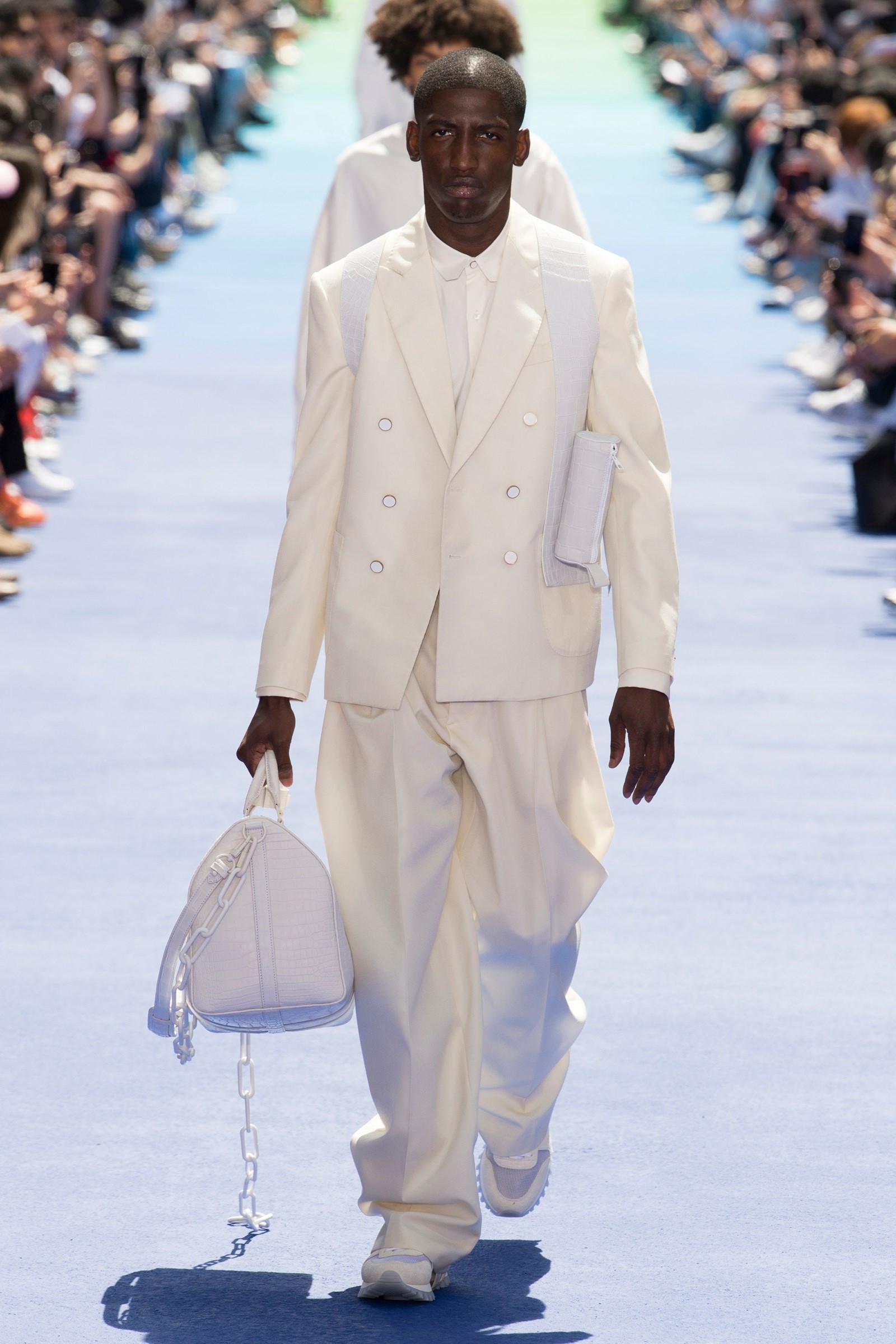
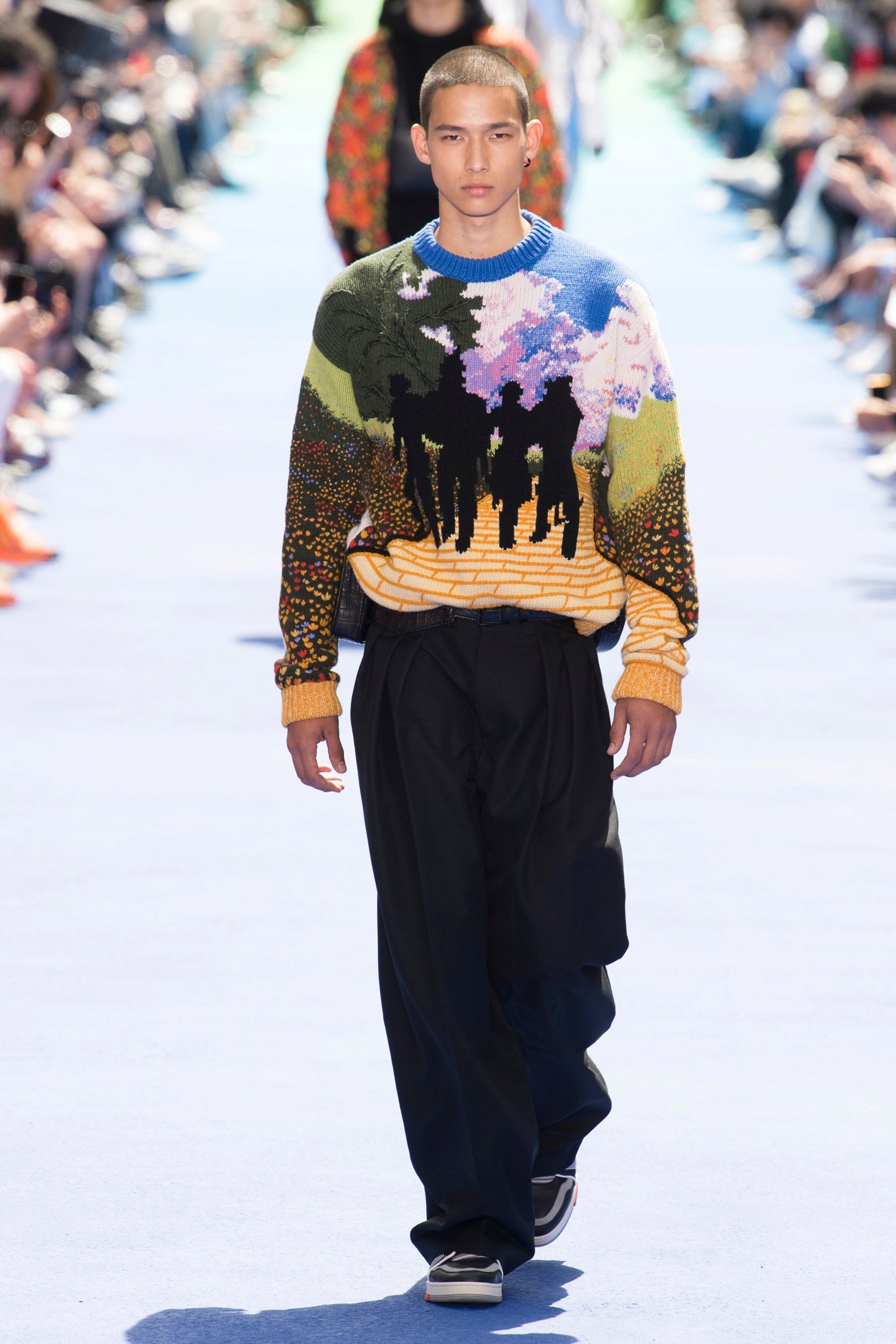
We are fortunate that Virgil was an obsessive archivist. He was making history in the moment and he knew the importance of cataloguing that work. That’s significant not only as reference, or as education, but as part of the new Black canon, as he would often refer to it. One of his first publications, the bound transcript of his Harvard lecture titled “Insert Complicated Title Here”, demonstrates his passion for sharing knowledge. This is where he gave the students his shortcuts for working in design and where he volunteered his now famous 3 per cent approach:
“Right now I’m only interested in editing something 3 per cent from its original form.” It’s an amazing stream of consciousness, where he opens his laptop and narrates over the work in progress: everything from behind-the-scenes images of the making of Nike prototypes to unreleased Kanye album covers. Here, too, we see him re-editing, sampling, remixing, referencing the Duchampian ready-made, revealing why he feels talking in quotations is so important – it’s all laid out. Artwork, the catalogue for “Figures of Speech”, is also a forensically comprehensive catalogue of everything he introduced to culture. It’s the Abloh design bible. Something’s Off, the Taschen-produced Nike Icons inventory, is a similarly fascinating insight into his approach to trainer design. Abloh-isms, a collection of his soundbites and word assemblages, shows us his amazing gift for language, his killer quotations, his lyrical wordplay. “In my mind, I haven’t done any work yet. I’ve just made a case for why my point of view is valid.”
Virgil was also one of the few designers of his generation to truly push fashion film towards the cinematic. The storytelling ambition in each of his collection videos for Louis Vuitton is epic – a reaffirmation of the Black canon in contemporary culture, tracing the birth of rave and hip-hop poetics and sonics, the African American exiled in Europe, jazz, free-form, improvisational thinking and the Black avant-garde. These are all through lines in his non-narrative, highly expressive cinematic artworks. Just as impressive as the aesthetics is the transgenerational casting of Black and POC talent. The roll call in just a couple of the films, Amen Break and Peculiar Contrast, Perfect Light, is stellar: GZA, Goldie, Yasiin Bey, Thelma Buabeng, Octavia Bürgel, Caleb Femi, Lupe Fiasco, Damian Eugene Nagisa Williams, Shabaka Hutchings, Kai-Isaiah Jamal, Jim Joe, Malik Le Nost, Issa Perica, Julian Eugene Tsukasa Williams, Kandis Williams and Saul Williams all make an appearance. Directing is credited to Sultan and the artist Wu Tsang. Choreography is by Josh Johnson, music Benji B, styling IB Kamara. These are huge casts behind and in front of the camera, all elevating each other’s craft, all using the powerful stage of a Louis Vuitton show and its promotional reach to push a new conversation about cultural relevancy.
On a more personal level, Virgil’s kindness, too, was remarkable. In the aloof world of fashion and the arts he was always a communicator of grace and gentleness. A truer gentleman I have never witnessed in this industry. It was testimony to his character that so many people posted the personal messages of support he had sent them during his life via WhatsApp, DM or text message immediately after he left us. His ability to mentor, support, boost, nurture and share gratitude with so many reveals more about his personality than even his work can. In his work we see his creative flair, imagination, gift for collaboration, his politics and sense of purpose, but in these messages we see his humility, warmth and tireless consideration towards others.
Virgil Abloh was a prismatic personality. He split the light and shone chromatic shards of positive energy as far as he could travel, as quickly as he could post and as daringly as he could imagine. Every encounter with Virgil was memorable and every encounter with his legacy will be a reminder that great souls continue to work their magic even after they have gone. To paraphrase the poem When Great Trees Fall by Maya Angelou, which was read at the Fashion Awards by Idris Elba the day after Virgil’s passing: when great souls die, we can be better, for they existed.
